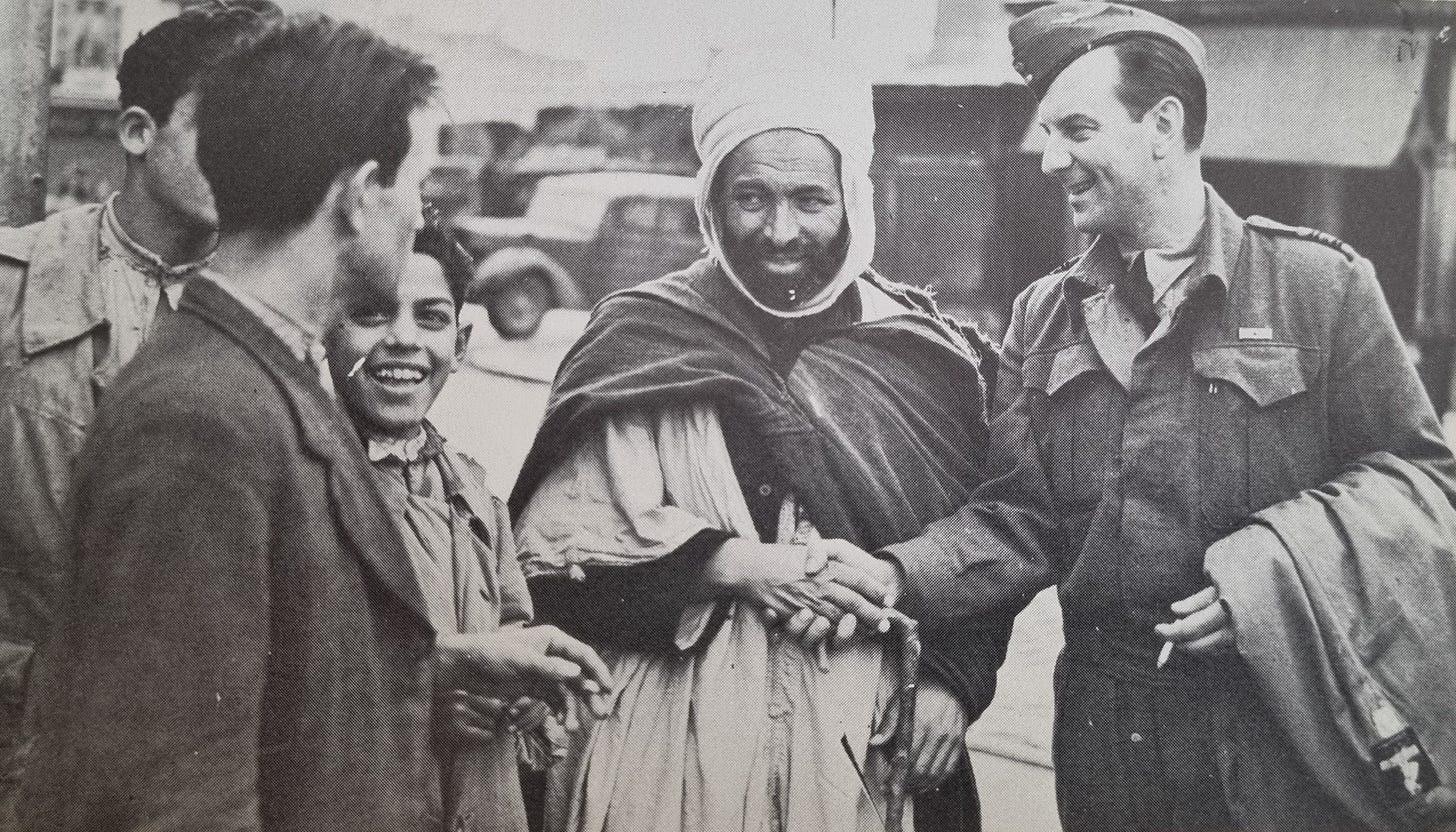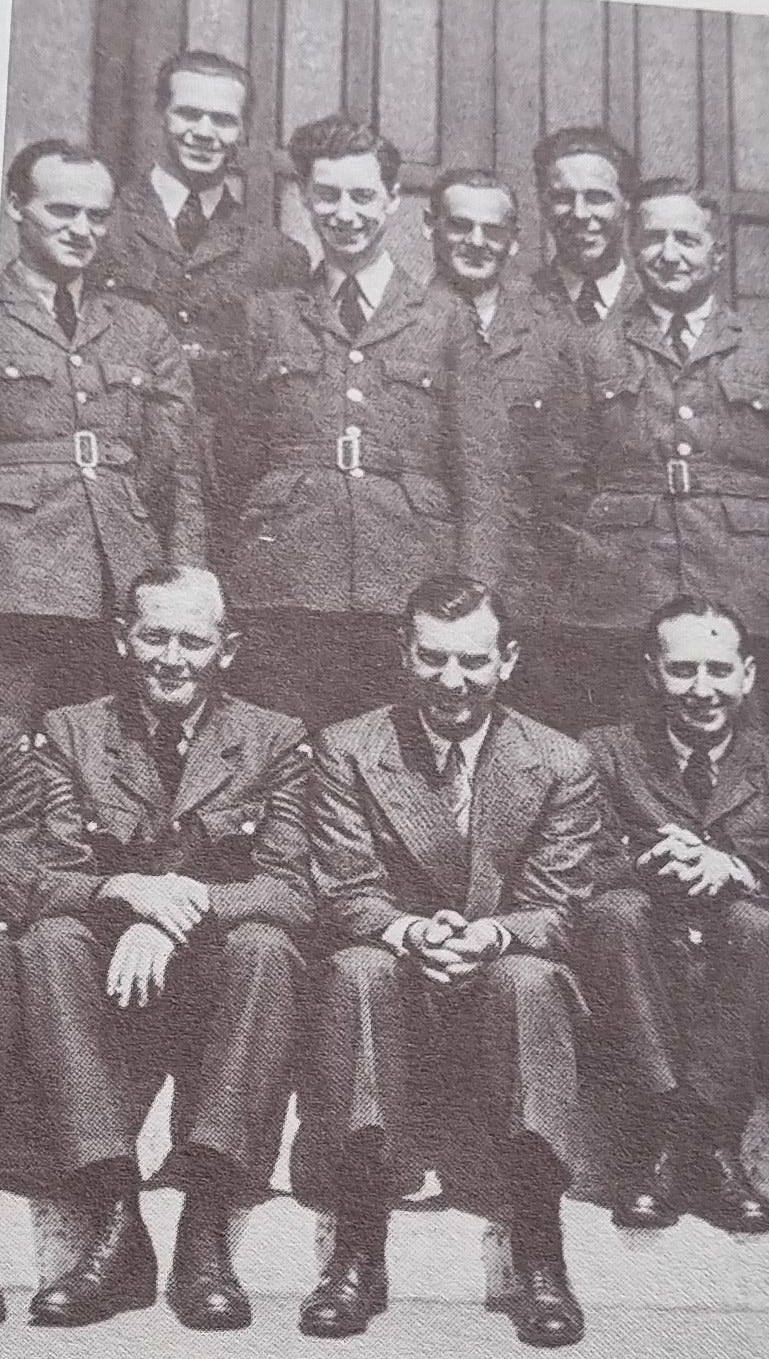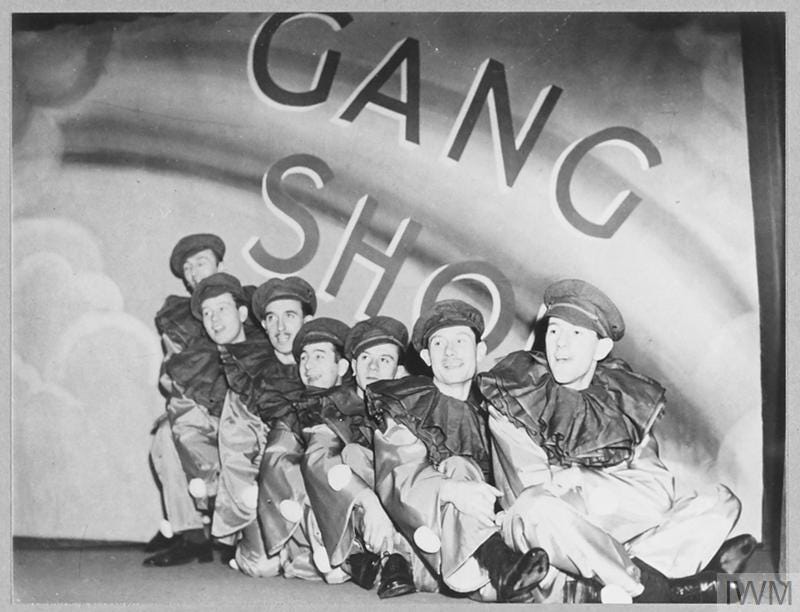Every now and then you read historical documents, an anecdote catches your eye and you do a double-take. Is that a film script or did this actually happen? I found one such anecdote in Ralph Reader Remembers, the memoir written by the founder of the RAF Gang Shows.[1] A larger than life character, Reader, who once played Broadway with Al Jolson, was also an intelligence officer during the war and uncovered a German spy ring operating out of the Lion D’Or hotel in Rheims. But first, some background.

Ralph Reader followed an unconventional career path. It is hard to read his memoir without thinking that the term, ‘fake it until you make it’ was invented for his early career. He managed to get himself over to New York, where he spent several years dancing and choreographing on Broadway. Having made his name in the show business world, he returned to England and produced in the West End. Despite being offered a three year contract of $1500 a week to be MGM’s dance producer in the early 1930s to tempt him back to the United States (a princely sum that would have set him up for life), he turned his back on Hollywood to follow his passion, which was volunteering with the Boy Scouts. He put his impresario skills to good use and started producing variety or “Gang Shows” for the Scouts in 1932. These grew in size and scope and featured what became Reader’s signature song, ‘We’re Riding Along on the Crest of the Wave’. They were the first amateur show to play a Royal Variety Performance in 1937 and culminated in the film, The Gang Show.[2] Reader’s pioneering work with the scout movement not only caught the eye of the public, but also the Hitler Youth! They recognised a well organised troupe of young men when they saw one. Ribbentrop, the German Ambassador to Britain in 1936, approached Reader and tried to broker a meeting with the Hitler Youth movement in Germany. According to Reader, Ribbentrop asked:
“We’d like your opinion of the way we are running it, and with your experience of youth it could be most valuable.”[3]
Ralph politely declined this offer, but six representatives of the Hitler Youth visited him in Norbury to see what they could learn from the Gang Show.[4]
Another person who recognised the potential of The Gang Show was Major Archie Boyle, who asked Reader to establish a similar variety show with the apprentices at RAF Halton, Buckinghamshire.[5] Boyle, who had been involved in the scouting organisation, also happened to be a senior intelligence officer in the RAF.[6] Touring different RAF stations organising entertainment and raising morale provided a useful cover-story for a military intelligence officer, especially as no one would be surprised by a concert party’s frequent movements and freely talking with the servicemen. Shortly after the outbreak of war, Reader was recruited into intelligence with a brief to investigate and report on any security lapses of suspicious behaviour as he toured the camps across Britain and France. At first, it was thought that Reader’s Gang Show could tour under the auspices of ENSA and Basil Dean was delighted at the prospect, but after consideration the security risk of involving civilians so close to intelligence work was too high, so the RAF commissioned Gang Show Unit No.1.[7] This move was not entirely out of character; the RAF had always been the most progressive of the three services when it came to music and the arts; professional musicians having received call up papers were encouraged to join the RAF rather than the Army or Navy knowing their talents would be appreciated.[8] Gang Show units initially comprised of a flight sergeant and ten men, however, servicewomen were introduced in 1944 with the inclusion of the ATS.
Having established Unit No.1, Ralph Reader’s troupe headed to France to entertain the British Expeditionary Force.[9] They arrived in France on 22nd November and were greeted by ENSA’s Welfare Officer, Virginia Vernon in Arras. The variety act had a packed schedule, playing two or three shows a day, often located miles apart, in out of the way and remote bases close to the border. When the unit was not performing, Reader provided security lectures to airmen stationed in these locations, whilst trying to gather intelligence. Security leaks were a major concern, as Reader describes:
“There was an enormous amount of subversive propaganda finding its way into some of the RAF camps in the form of leaflets. We wanted to know the source of this supply and how it was getting into the barrack blocks and in to the hands of the troops.”[10]

Reader was billeted to Hotel Lion D’Or in Rheims during the tour and, taking his intelligence work seriously, he settled down in the lounge bar and started noticing suspicious behaviour. One day, Reader noticed a man walk in to the hotel, check his hat with the girl at the cloakroom desk, order a drink at the bar, down it, return to collect his hat, tip the girl, and leave. He observed the same routine three days later. Why check your hat if you’re just having a swift drink and had no intention of staying? He reported the behaviour to the Intelligence Department and thought nothing of it. As with most intelligence work, Reader played an isolated part of a longer chain and was rarely aware of the consequences of his suspicions, however, this was different:
“I [Reader] read a book long after the war and discovered that the hat-check girl was passing on information she gathered from the various members of the Services who frequented the bar by inserting it in the rim of the hat. I read then that she had been arrested and, so the story goes, she was found to be on the other side and was shot.”[11]
I haven’t been able to find this book, but if you know anything more about this incident, I’d love to know!
That first Gang Show tour of France in 1939 was a roaring success and the RAF increased the number of Gang Show units during the course of the war. Squadron Leader Reader does not write about his intelligence work after this tour, but one can assume that he ‘kept his hand in’ whilst coordinating an ever-growing Gang Show organisation. By 1945 there were 15 Gang Shows touring Britain and 10 units performing overseas.[12] Despite it being far smaller than ENSA, a surprising number of professional performers started their careers in RAF Gang Shows, including Peter Sellars, Dick Emery, Janet Brown, Cardew Robinson, Max Wall, Tony Hancock, Rex Jameson, Charlie Chester and Eric Sykes. In addition to the high quality and organisation of their performances, an Air Force News article highlighted the high work-rate of the Gang Show airmen:
“In my opinion they can never be repaid for the hard, morale-boosting work they do. A member of the Air Council started an enquiry to find out the average working-day of a Gang Show airman. And it was sixteen hours. Work out for yourself what it must be like over here, where amenities can often be counted on the fingers of a bloke giving the V sign.”[13]
After the war, Reader continued to work with the scout movement and organised large scale shows on behalf of the military, including Burma Star Reunions and Army Pageants at the Albert Hall. He was awarded the CBE in 1957 for his remarkable work. If Reader had taken that lucrative 3 year contract and moved to Hollywood before the war, would we have been deprived of the RAF Gang Shows and the song, ‘Crest of the Wave’? Who knows.
[1] Ralph Reader, Ralph Reader Remembers (Baily Brothers & Swinfen Ltd, 1974).
[2] Clip of Ralph Reader singing ‘Crest of the Wave’ from The Gang Show (1937):
.
[3] Ralph Reader, Ralph Reader Remembers (Baily Brothers & Swinfen Ltd, 1974), p. 107.
[4] Reader, Ralph Reader Remembers, p. 108.
[5] Richard Fawkes, Fighting for a Laugh: Entertaining the British and American Armed Forces, 1939-1946 (Macdonald and Jane’s, 1978), p. 53.
[6] Note: Major Archie Boyle later Air Commodore Archibald Boyle MC OBE CMG, WW2 Director RAF Intelligence and SOE Director of Intelligence & Security
[7] Reader, Ralph Reader Remembers, p. 112.
[8] Andrew Merriman, Greasepaint and Cordite: The Story of ENSA and Concert Party Entertainment during the Second World War (Aurum, 2012), p. 95.
[9] Reader, Ralph Reader Remembers, p. 113.
[10] Reader, Ralph Reader Remembers, p. 117.
[11] Reader, Ralph Reader Remembers, p. 119.
[12] Tony Lidington, ‘Don’t Forget the Pierrots!’: The Complete History of British Pierrot Troupes and Concert Parties (Routledge, 2023), p. 248.
[13] Reader, Ralph Reader Remembers, p. 150.





I vaguely remember seeing The Gang Show in the early sixties, although the only thing that stands out is Riding Along On The Crest Of A Wave. In my mind I was sure that I went to see it in person but on checking I see that it was staged in North London which makes it unlikely as we lived in South London and not on a tube line. So maybe it was on the TV. Alan
I remember singing Crest of the Wave as a cub in my first Scout Gang Show in 1980!